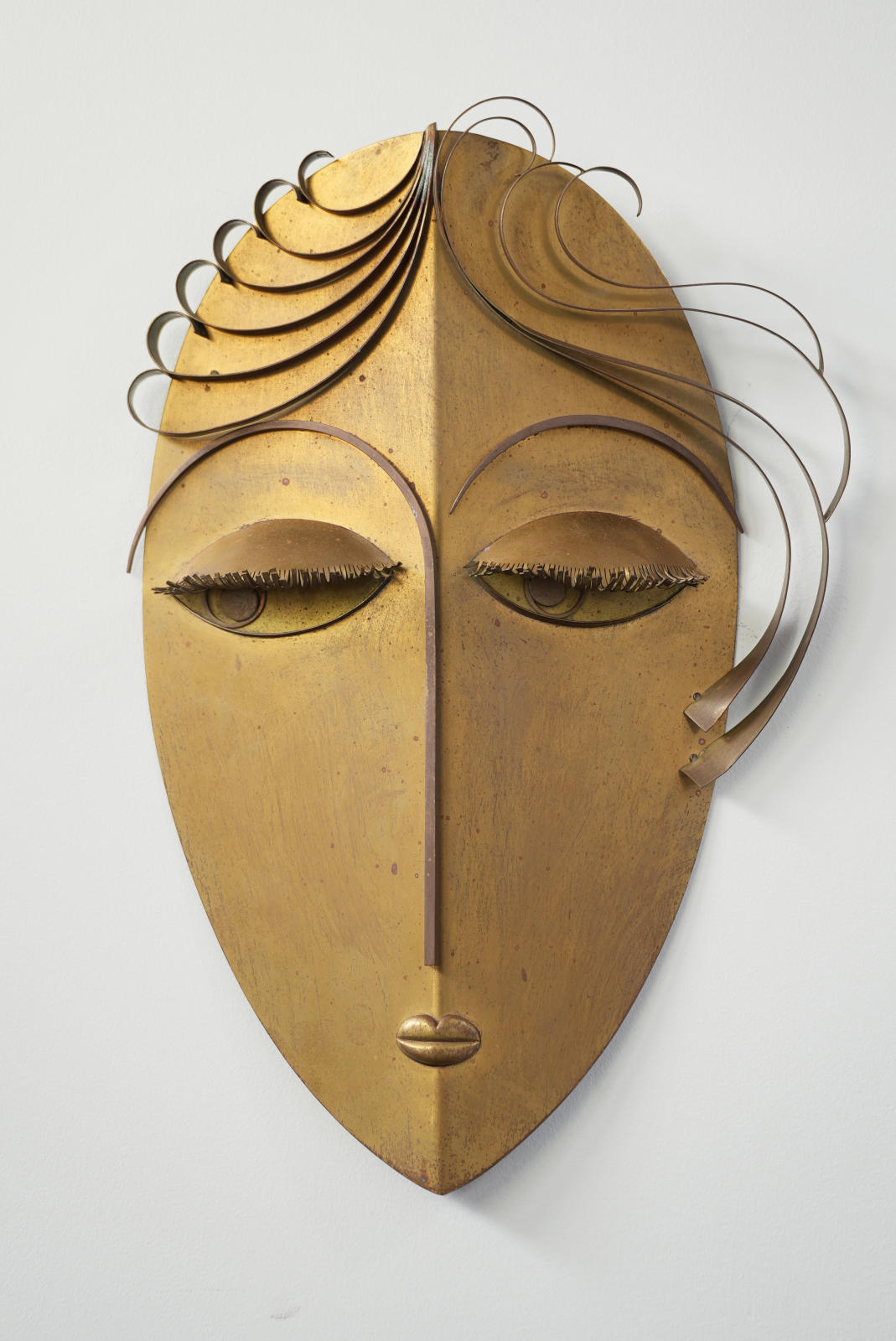













19 1/2 x 13 3/4 x 1 (male)
Male signed: Franz Hagenauer Wein (rear), marked: Made in Austria (rear)
artist
As a boy of only twelve years old Hagenauer attended the progressive School of Applied Arts in Vienna and studied under Franz Cizek, who as a teacher was credited with discovering promising artistic talent in young children. Beginning in 1921 Hagenauer studied sculpture at the School of Arts and Crafts under Anton Hanak, who is counted among the best known Austrian sculptors of the 20th century. He was also taught metalwork under Josef Hoffman. Franz Hagenauer worked with his brother Karl in the workshop founded by their father in 1898 in Vienna. The Werkstätte Hagenauer enjoyed great economic success. Many of their works were exported beyond Europe and as far away as the United States. However, with the onset of World War II many of these exports were curtailed. Franz Hagenauer’s greatest fulfillment as an artist lay in sculpture rather than as a designer of everyday metal objects.
After the war ended, the Werkstätte Hagenauer expanded its production to include animal figures and beautiful wooden objects. At this time the company coordinated its production with such celebrated architects as Oswald Haerdtl (1899–1959), Karl Schwanzer (1918–1975), and Carl Appel (1911–1997). Upon his father’s death in 1956 Franz Hagenauer assumed the leadership of the company. The decorative objects produced at this time met with critical success and international recognition where the brothers Hagenauer received many awards for their designs as at the Triennials in Milan. In 1962 Hagenauer was appointed Professor of Metal-Free Forms at the College of Applied Arts in Vienna. He was celebrated for his small brass figures which have a radically reduced form of expression. When Franz Hagenauer died in September 1986, the company continued operating for another year. Its closure marked the end of one of the most successful chapters of the metalworking industry in Austria.
Description
This pair of male and female brass masks are emblematic of Hagenauer’s highly stylized Art Deco design. The artist’s reductionist approach together with a nod to African tribal shields create an expressive yet reserved style. The mirroring of the objects works flawlessly as the female mask’s eye wanders over to her male counterpart in a flirtatious act. Haganauer experimented a lot with reliefs instead of full volume and these are some of his strongest works.
Franz Hagenaur was the son of Carl Hagenauer, the founder of the exalted Viennese metal shop, Werstätte Hagenauer Wein (wHw). Along with Franz’s brother Karl, the Werkstätte Hagenauer Wein is renowned for its innovative metalwork and distinctive Art Deco and modernist designs. These finely crafted decorative and utilitarian objects were recognized for their blend of Art Deco, Jugendstil, and modernist influences.













